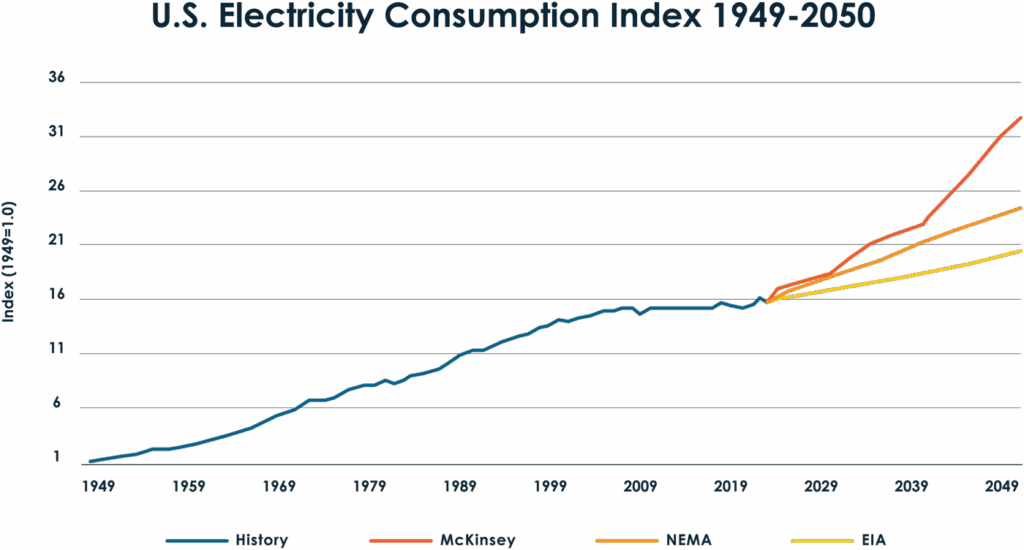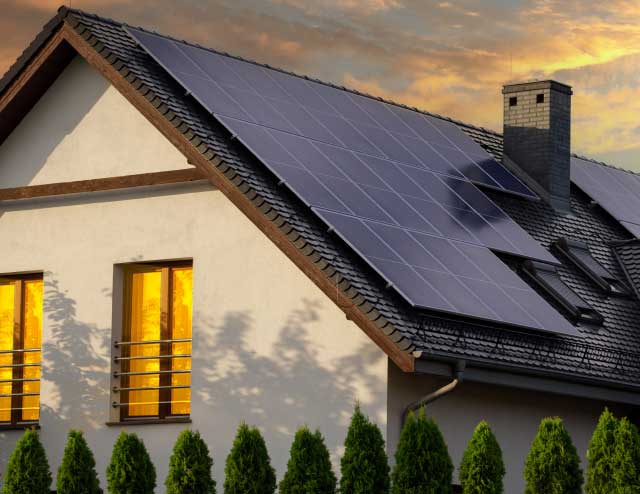How to Meet Rising Energy Demand

How to Meet Rising Energy Demand

The challenge ahead is clear: Energy demand is growing at an unprecedented rate, and it will take pragmatic innovation and an “all of the above” approach to meet it.
Why power demand is on the rise
Over the past decade, electricity demand was relatively flat. During this time, we experienced a gradual shift in our generation mix with the retirement of older generation plants and the addition of newer, more efficient natural gas plants and renewable energy technologies. When we compare this period to what’s projected to unfold over the next 10 years, this period has been relatively calm.
According to a new analysis completed for the National Electrical Manufacturers Association (NEMA), U.S. electricity demand will increase 2% annually and 50% by 2050.
The recent rise in electricity demand is due to several factors, including the buildout of data centers and the increasing use of AI, the reshoring of manufacturing in the U.S., and electrification efforts. There’s strong consensus that electric demand will continue to rise — the only major disagreement is around how high and how quickly.

As this upward trend continues, to provide solutions and alleviate the expected strain on the power grid, as well as higher energy prices, we need more generation built out — and built out quickly. To support customers, generation will need to increase significantly — with a diverse array of new generation sources and innovative energy solutions all playing a part.
The challenge ahead is clear:
Energy demand is growing at an unprecedented rate, and it will take pragmatic innovation and an “all of the above” approach to meet it.
Why power demand is on the rise
Over the past decade, electricity demand was relatively flat. During this time, we experienced a gradual shift in our generation mix with the retirement of older generation plants and the addition of newer, more efficient natural gas plants and renewable energy technologies. When we compare this period to what’s projected to unfold over the next 10 years, this period has been relatively calm.
According to a new analysis completed for the National Electrical Manufacturers Association (NEMA), U.S. electricity demand will increase 2% annually and 50% by 2050.
The recent rise in electricity demand is due to several factors, including the buildout of data centers and the increasing use of AI, the reshoring of manufacturing in the U.S., and electrification efforts. There’s strong consensus that electric demand will continue to rise — the only major disagreement is around how high and how quickly.

As this upward trend continues, to provide solutions and alleviate the expected strain on the power grid, as well as higher energy prices, we need more generation built out — and built out quickly. To support customers, generation will need to increase significantly — with a diverse array of new generation sources and innovative energy solutions all playing a part.
Residential solar and
storage helps us meet
demand and ensure
resilience
On-site generation paired with storage not only helps meet this demand with firm, reliable power, but also provides American families disaster resilience. Ensuring home solar power is accessible to American families presents a big opportunity with several advantages: Rooftop solar and storage bypasses long interconnect queues, doesn’t waste valuable land, and, when paired with a battery, can act as backup power supply and provides dispatchable power to reduce peak electricity loads.

